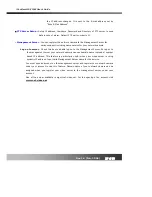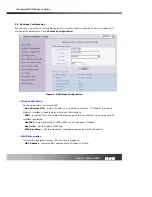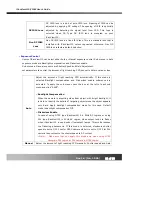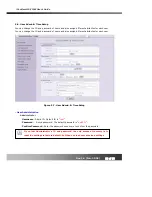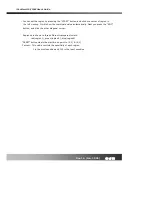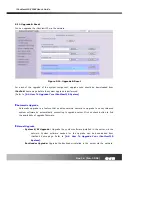
iCanView110/110W User’s Guide
Rev.1.4 (Jan. 2005)
31 of 56
y
Exposure Control
Users of iCanView110 can select either Auto or Manual exposure control. Sub menus in Auto
exposure mode are Backlight compensation and Flickerless enable.
Sub menus in Manual exposure are Shutter Speed and Gain Adjustment.
set parameters to control the amount of light reaching CCD sensor to obtain various video
Auto
Adjust the amount of light reaching CCD automatically. If this mode is
selected Backlight compensation and Flickerless enable submenus are
activated. To apply the sub menu check the box at the left of each sub
menu and click “SAVE”.
□
Backlight Compensation
When the camera is acquiring video from object with bright backlight, it
is hard to identify the details of targeting object since the object appears
very dark. Apply backlight compensation mode for this case. Default
mode is backlight compensation Off.
□
Flickerless Enable
In case of using NTSC type iCanViewV110 in 50Hz AC regions or using
PAL type iCanView110 in 60Hz AC region, video output tends to flicker
when iCanView110 is used under fluorescent lamps. This mode reduces
the flickering phenomena. If this mode is selected, electronic shutter
speed is set to 1/100 sec for NTSC camera while it is set to 1/120 for PAL
camera to synchronize the shutter speed to AC current.
<Note> : Make sure that you apply this mode only when using NTSC
camera in PAL region or PAL camera in NTSC region.
Manual
Adjust the amount of light reaching CCD manually. Shutter speed and Gain
DC IRIS Lens
DC IRIS lens is a kind of auto IRIS lens. Opening of IRIS can be
adjusted by applying DC voltage. The opening of IRIS is optimally
adjusted by detecting the signal level from CCD. This type is
selected when CS Type DC IRIS lens is mounted on your
iCanView110.
Non DC IRIS
Lens
Non DC IRIS lens is a fixed IRIS lens. This is a standard lens that is
installed with iCanView110 unless requested otherwise. Non DC
IRIS lens is factory default selection.











